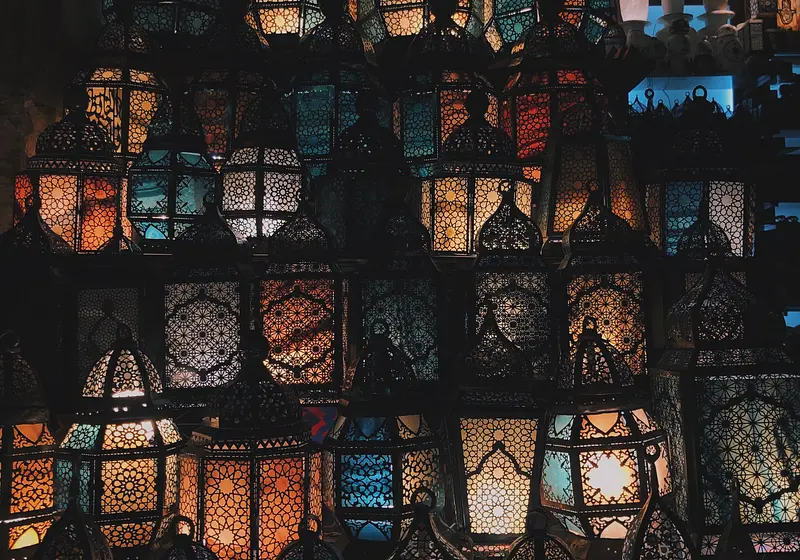In Islam, there are five pillars by which every Muslim lives their life. One of them is to perform Hajj, or pilgrimage to Mecca, where the Ka’bah is located, at least once in their lives. Each year, nearly two million Muslims perform Hajj. It has been performed for ages – but where did it all start?
Let us slide into your dms 🥰
Get notified of top trending articles like this one every week! (we won't spam you)History
Originally, the Prophet Adam (as) built the Ka’bah as a place of worship for his people, and it lasted for a while. However, people eventually adopted different religions and different places of worship. The Ka’bah fell into disarray and only a remnant of the former structure remained; approximately 4000 years ago, the Prophet Abraham (as) rebuilt the Ka’bah and it became a place of worship through his son Ishmael (as).
Yet, with the passing of time, the Ka’bah was converted into a house full of idols – as many as 360! This unfortunate conversion was then reversed by the Holy Prophet (may peace and blessings of God be upon him) who rebuilt the Ka’bah as a place of worship for all people, to unify them.
Take the Quiz: Which Indian city is the perfect holiday spot for you!?
Let's match you with an Indian city that you would love!
The Ka’bah
The Ka’bah, which is 15.25 meters high (approximately 50 feet), is shaped like a cube. It is constructed out of stone, and its inside is empty – except for a black stone (known as “Hajr-al-Aswad”) that is in one corner.
The background of the Black Stone is unclear – although it is known that the stone was present when Prophet Abraham (as) and Ishmael rebuilt the Ka’bah. It is important to note that the stone itself does not hold any spiritual significance – rather, if possible, the pilgrim approaches it and kisses it in memory of the Holy Prophet (may peace and blessings of God be upon him) kissing it when he performed circuits around the Ka’bah (he did this as an expression of his emotion that the Ka’bah (after being rebuilt) would therefore be used as a place of worship).
Following the defeat of the pagan people of Mekkah, the Holy Prophet (may peace and blessings of God be upon him) made his first pilgrimage to Mecca, during which over 100,000 pilgrims also conducted their pilgrimage. During this time, he dressed (put on) the first Islamic Kiswa (a covering) onto the Ka’bah. Afterward, different traditions followed – at one point, the Kiswa was cut into pieces and distributed to pilgrims during the annual pilgrimage.
At another point, the new Kiswa would be draped on top of the old Kiswa – however, this stopped during the reign of Al-Mahdi (also known as the Abbasid Khalifa), who, out of fear that it would damage the Ka’bah, ruled that there should only be one Kiswa on the Ka’bah at any time, and so it has remained as such to today. In addition, the color of the Kiswa has changed too – from red to green to black (currently, it is black).
Originally, the Kiswa was made in Egypt and then transported to Mekkah, via 15 camels, each carrying a portion of the fabric. This occurred for centuries, and when the Kiswa was delivered to Mekkah, the people of Mekkah received it with great fanfare, including music. However, the Saudi Arabian King Abdul objected to this practice, and thus, the practice was discontinued.
Then, issues with Egypt arose, and the Kiswa was then manufactured in Mekkah. As time went on, the rift healed and Egypt again made the Kiswa, until 1962, when it fell to civil issues. Then, the manufacturing location of the Kiswa was permanently moved to Mekkah.
Today, the Kiswa initially begins as pure white silk, which is then dyed black. It is composed of 47 pieces, each of which is 14 meters long (approximately 46 feet) and 95 centimeters wide (approximately 3 feet). Various verses of the Holy Quran are intricately woven into the silk using gold and silver wire – which sparkle and shine in the sunlight, and softly glow in the moonlight at night. The composition of the Kiswa truly makes the Ka’bah shine and a spectacular, memorable sight to all those who perform the pilgrimage.
The Ka’bah also unifies Muslims through the daily prayers – Muslims around the world face the Ka’bah when performing their prayers, thus ensuring that Muslims feel a sense of unity among them.
Tradition
The ritual of Hajj has many components – starting with pilgrims entering a state known as “Ihram”, where they wear two seamless white sheets once they reach certain, specially designated areas close to Mecca. Once they wear it, they then recite “Talbiyah” (which translates to: Here we come, O God, here we come No partner have You, here we come/Indeed, praise and blessings are Yours, and the Kingdom too No partner have You, here we come).
Following this, the pilgrims make the first “tawaf”, which is where the they walk counterclockwise around the Ka’bah seven times.
After this, the pilgrims complete “sa’yy”, where they run between the two hills of Marwa and Safa, near the Ka’bah. After the sa’yy, the pilgrims go to Mina and spend one night there.
In the morning, they travel to the Plain of Arafat, perform prayers, and stay until sunset (until sunset as this is when the Holy Prophet (may peace and blessings of God be upon him) made his farewell address). Then, they travel to Muzdalifah, where they say their prayers. In the morning, they then return to Mina and symbolically throw small stones at three pillars – representing the pilgrims’ rejection of evil. On the tenth day of the pilgrimage, the pilgrims have their hair cut or head shaved, and leave the state of Ihram by wearing daily clothes.
Afterward, they do another tawaf of the Ka’bah, and another sa’yy before the day ends. Then, the pilgrims go to Mina until the 12th or 13th day of the pilgrimage, and continue throwing stones during the day. On the afternoon of the 12th or 13th day, the pilgrims return to Mecca and perform the last tawaf, after which they are free to leave.
This year, the dates for Hajj are expected to fall within July 28 and August 2. The history of Hajj is rich, the pilgrimage is one of a kind, and will continue to leave a lasting impact on those who perform it.












